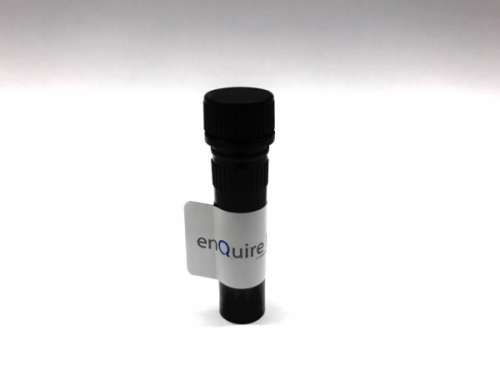E. coli tsaE Recombinant Protein Product Attributes
Product Type: Recombinant Protein
Recombinant tsaE based upon sequence from: E. coli
Host: QP7334 protein expressed in E. coli.
Tag: His
Protein Construction: A DNA sequence encoding the Escherichia coli (strain K12) tsaE, was expressed in the hosts and tags indicated. Please select your host/tag option, above.
Application Notes: Please contact us for application specific information for QP7334.
Bioactivity Data: Untested
Full Length? Full Length
Expression Region: Met1 – Gly153
Amino Acid Sequence: MMNRVIPLPD EQATLDLGER VAKACDGATV IYLYGDLGAG KTTFSRGFLQ ALGHQGNVKS PTYTLVEPYT LDNLMVYHFD LYRLADPEEL EFMGIRDYFA NDAICLVEWP QQGTGVLPDP DVEIHIDYQA QGREARVSAV SSAGELLLAR LAG
Purity: Greater than 90% as determined by SDS-PAGE.
Reconstitution Instructions:
Concentration of E. coli tsaE Protein:
Endotoxin Levels: Not determined.
Buffer: Tris-based buffer, 50% glycerol
Storage Conditions: Store at -20C to -80C.
| Recombinant E. coli tsaE Protein General Information | |
|---|---|
| Alternate Names | |
| b4168; ECK4164; yjeE; JW4126; tRNA threonylcarbamoyladenosine biosynthesis protein Ts | |
| Curated Database and Bioinformatic Data | |
| Gene Symbol | tsaE |
| Entrez Gene ID | 948684 |
| RefSeq Protein Accession(s) | NP_418589.1 |
| RefSeq mRNA Accession(s) | NC_000913.3, NZ_LN832404.1 |
| UniProt ID(s) | P0AF67 |
| KEGG Gene ID(s) | ecj:JW4126 |
| General Description of Recombinant E. coli tsaE Protein. | |
| Required for the formation of a threonylcarbamoyl group on adenosine at position 37 (t6A37) in tRNAs that read codons beginning with adenine. Is probably involved in the transfer of the threonylcarbamoyl moiety of threonylcarbamoyl-AMP (TC-AMP) to the N6 group of A37, together with TsaD and TsaB. TsaE seems to play an indirect role in the t6A biosynthesis pathway, possibly in regulating the core enzymatic function of TsaD. Displays ATPase activity in vitro. | |
Limitations and Performance Guarantee
This is a life science research product (for Research Use Only). This product is guaranteed to work for a period of two years when stored at -70C or colder, and one year when aliquoted and stored at -20C.




There are no reviews yet.